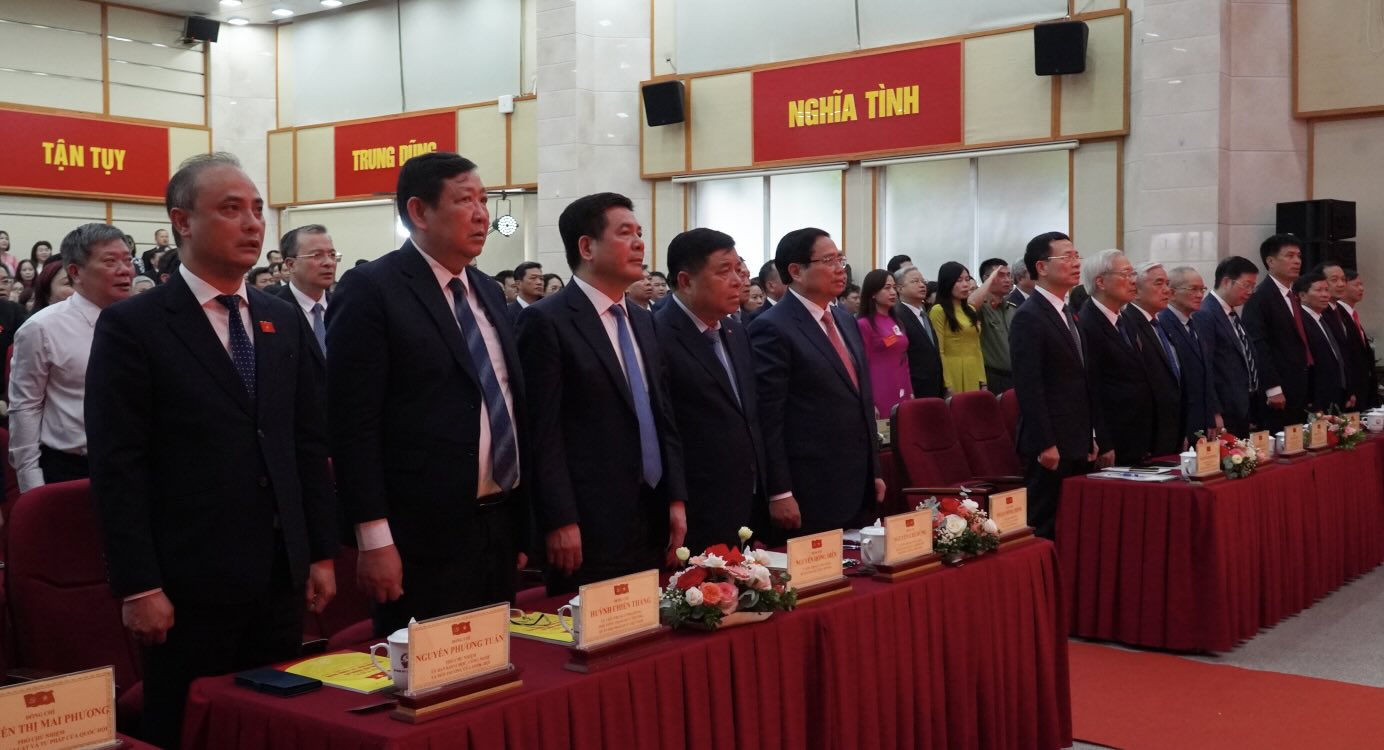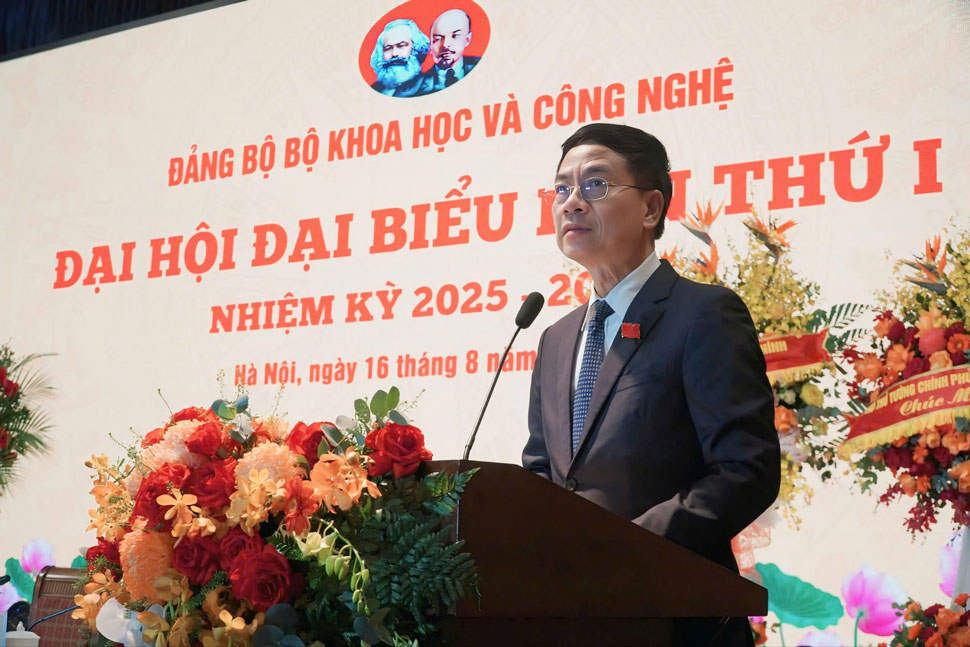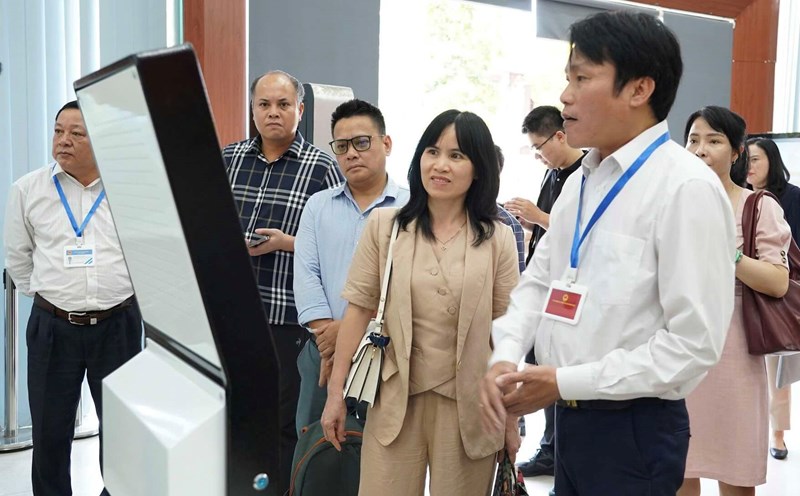
Speaking at the Congress, Minister of Science and Technology (KHCN) Nguyen Manh Hung emphasized that the Congress not only marked the event of the Party organization in the ministry being strengthened after the merger, but also demonstrated strong political determination in making science and technology, innovation and digital transformation truly a central driving force for national development, in the spirit of Resolution 57.
"The 2025-2030 term is the first time the two ministries have merged, creating a strong resonance and eliminating the boundary between science and technology, innovation, digital transformation, digital technology industry and digital infrastructure. These three pillars are identified as contributing at least 50% to GDP growth, focusing on solving national strategic problems, improving competitiveness, labor productivity, governance capacity and people's quality of life.

The Minister affirmed the pioneering - creative - breakthrough - loyal - affectionate spirit as a characteristic "genocryptography", and called on the congress to summarize in depth, set out breakthrough goals and solutions, and build an ecosystem connecting businesses, schools and the state. From there, towards a country of innovation and comprehensive digital transformation.
"The merger of the two ministries (Ministry of Science and Technology and Ministry of Information and Communications) creates a synchronous power, erasing the line between science and technology, innovation (STI), digital transformation (DTC), digital technology industry and digital infrastructure. The merger of the two ministries requires a new approach and new approach. And only then can this consolidation create value...", the minister emphasized.

In his political report at the 1st Party Congress of the Ministry of Science and Technology, Deputy Minister Pham Duc Long emphasized that in the 2020-2025 period, the Party Committee issued 45 resolutions, streamlined the apparatus by nearly 40% and achieved many important results.
The national innovation system was formed with enterprises as the center, Vietnam's global innovation index increased in ranking, international announcements increased by more than 22%, possessing strong development intelligence and standards - measurement - quality. Meanwhile, the information and communication sector has made its mark with the post office increasing by 18 places, telecommunications becoming a strategic digital infrastructure, 4G coverage of nearly 100% of the population, 5G deployment and digital economy accounting for more than 20% of GDP.
In addition to achievements, the report also frankly pointed out limitations: slow institutional reform, unsynchronized apparatus after the merger, low budget for decentralization, low research results for commercialization, uneven infrastructure and human resources, and dependence on technology imports.
Entering the 2025-2030 term, the Party Committee set a goal of building the Ministry of Science and Technology into a national unit for Science and Technology, Environment, Investment, Tourism, Post, Telecommunications, Standards, possessing intelligence and nuclear energy, and having the capacity to lead the country's development.
Key indicators include: contributing 5% to GDP from science, technology and technology and innovation; raising the proportion of the digital economy to 30% of GDP; covering 100% of the population with 5G, piloting 6G; building 100 innovation centers and a national supercomputing center; ensuring 40% of research results are commercialized; training 50,000 strategic technology engineers and attracting 500 international experts.
Along with that are key and breakthrough tasks in institutional improvement, strategic infrastructure investment, development of an innovation ecosystem, mastery of new technology, development of nuclear energy and building a high-quality workforce.










